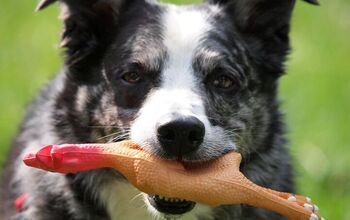Traveling with your best furry friend by your side can be an exciting adventure. It’s a great opportunity to make lifelong memories while strengthening that special bond. However, some questions about their essential needs will naturally arise as you start planning…One of the biggest concerns for cat owners is whether or not to bring a litter box. It’s a valid question!This article will explore the pros and cons of traveling with a litter box. I’ll also discuss the different litter box types available and which may be best suited for different forms of travel, including road trips, camping, hotel stays, and more.Ensure a smooth journey for both you and your cat by checking out these tips and recommendations:Do Cats Need a Litter Box When Traveling?Whether or not your cat will need a litter box during your travels will depend on the style of travel you plan. Setting your cat up comfortably in your vehicle for a long road trip makes it much easier to provide access to a litter box during travel than flying with a cat.You must also consider the length of your travels, where you will stay overnight, and other factors related to your vacation plans. While your cat can take a flight safely without access to a box (assuming they have been given a chance to do their business before boarding the plane and after you have landed), the same can’t be said for an overnight stay at a pet-friendly hotel.Let’s break it all down a little further…How Do You Travel with a Cat Without a Litter Box?Some travel plans simply can’t accommodate the use of a litter box. The most common example of this is flying with a cat. However, litter boxes are also off the table when taking your cat on other forms of public transit, like a bus or train.If you know your cat will be without their litter box for an extended period, allow them to “do their business” right before your travels begin. Many airports have dog bathroom stations, where you could also go to let your cat relieve themselves. Alternatively, you may choose to let them have their last bathroom break before leaving your cat to enter the airport.One way to handle this is to bring a disposable litter box with a small amount of litter when you leave the house. Alternatively, if your cat is a frequent traveler, you may be able to train them to do their business on a puppy pee pad. This is easier to bring along in these situations and easier to dispose of when they are finished.It is also recommended to not feed your cat at least six hours before any travel where a litter box won’t be available. This allows any food in their system to hopefully pass, reducing the risk they will need to go and, in turn, preventing accidents. Although, I still recommend lining their carrier with a pee pad as an extra layer of protection.How Long Can Cats Go Without a Litter Box?Will your cat be without a litter box for a while during travel? Don’t fret! While you shouldn’t encourage your cat to “hold it” on a regular basis, cats have been known to go 24-48 hours safely without going to the bathroom. This is, of course, the extreme. However, it does mean that a 6-hour flight isn’t a significant concern.Of course, every cat is different. Some cats will be able to wait this time without a problem. Others, however, may need to go to the bathroom more frequently. This is especially important to note if you have a kitten, a senior cat, or a cat with a medical condition that could impact their bathroom needs.What is the Best Type of Litter Box for Your Cat-Friendly Travels?There are several different types of cat litter boxes to choose from, each with its own pros and cons. Let’s look at the options available and which may be the best choice for your next vacation (and why):Standard Plastic Litter BoxesIf you are traveling in an RV or travel trailer, you may be able to bring your cat’s usual litter box. Some common places to place a box include inside a floor-level cupboard, under a bench seat, or in the shower area when the shower isn’t in use.The biggest benefit of bringing your cat’s litter box from home is familiarity. Your cat knows that box, and it already has their scent. While the box's location is obviously going to change, having so many familiar elements may make it easier for your cat to adjust, reducing the risk of accidents.Cloth Travel Litter BoxesThese travel litter boxes are constructed from a durable material with a leak-proof lining, creating a lighter-weight solution for travel. I recommend choosing a cloth box with a lid. This allows you to seal off the box, keeping the litter (and odor) contained and allowing you to make a litter box accessible when needed without having to empty and refill it each time. Cloth boxes also usually have some form of carrying handle.The HiCaptain Portable Travel Litter Box is an excellent example of a standard cloth travel box. However, if your cat is used to a covered box at home, you may want to splurge on the Petsfit Upgrade Travel Portable Cat Litter Box.Nylon Travel Litter BoxA favorite of mine for travel due to how small it folds up, the OutdoorBengal Travel Litter Box for Cats is a portable and fully collapsible litter box option that folds up smaller than any other box on this list. We often use this box when backpacking or backcountry camping, where we are extremely limited on space for our gear.When your cat needs to use the box, snap the four corners together, and this flat piece of material transforms into a square box. It is constructed with a waterproof Oxford liner that can be easily wiped clean with a disinfectant wipe for quick and effective cleaning.

























